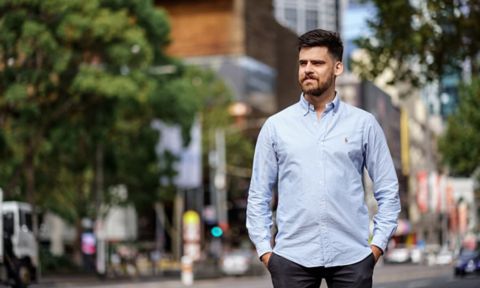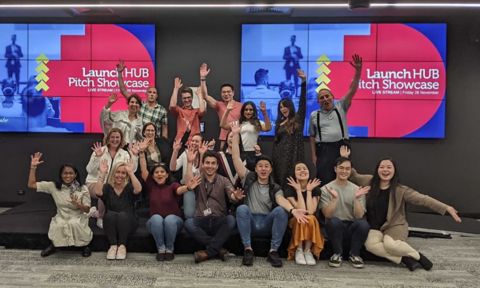Business building
Hayden grew up in Narooma, on the south coast of New South Wales, where he played in various bands in his teens. One of his bands supported iconic Australian rockers The Living End, which Hayden counts as a highlight of his years spent touring the NSW coast.
The same motivation that propelled Hayden to venture out of his hometown pushed him to create his own music business.
The M.O.O.N Project is focused on sound design and giving other sound artists and musicians the chance to share their stories and knowledge of culture.
“The ultimate goal for M.O.O.N is to feature Indigenous audiovisual artists from around the world – to provide a platform for these artists to share knowledge,” he said.
“I also want to work with high schools to develop a program that explores elements of the M.O.O.N Project, to teach them about their local Aboriginal communities and culture. Using interactive methods like immersive sound and musical applications allows me to add a contemporary aspect to age-old knowledge, which I believe will be engaging for secondary school students.”
A passion for passing on cultural knowledge through sight and sound has always driven Hayden and by furthering his studies, he’s confident it will broaden his skills as a musician.
“As an Indigenous musician, I have always wanted to combine my culture and art in ways that are unique and impactful,” he said.
“I find it beautiful how music, dance and storytelling are vessels for the transfer of knowledge in Aboriginal culture, they have been for tens of thousands of years, but what is most amazing is that fact that this knowledge has survived centuries through oral tradition.”
Hayden said he felt buoyed by the changing dynamic within the Indigenous music landscape and positive about its future.
“I see a lot more contemporary music that is being made by First Nations people and a lot more culture that’s being incorporated,” he said.
“Artists like Baker Boy, Mitch Tambo and King Stingray are being picked up by Triple J and more mainstream radio stations and platforms.
“It makes me feel amazing to see this, because for so long our music scene has been dominated by non-Indigenous artists. Our music has been buried and even thrown into the category of world music.
“I can see Indigenous or Aboriginal music being spotlighted more. I see it as the new songlines.”
Story: Kate Jones



